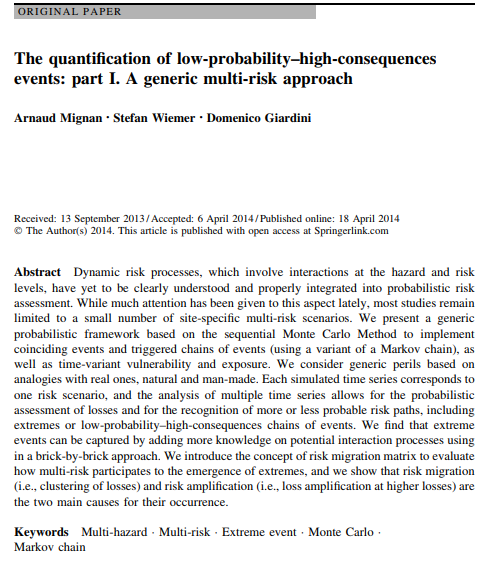This study  presents a novel, generic, multi-risk framework based on the sequential Monte Carlo Method (MCM) to allow for a straightforward and flexible implementation of hazard interactions, which may occur in a complex system.
presents a novel, generic, multi-risk framework based on the sequential Monte Carlo Method (MCM) to allow for a straightforward and flexible implementation of hazard interactions, which may occur in a complex system.
Dynamic risk processes, which involve interactions at the hazard and risk levels, have yet to be clearly understood and properly integrated into probabilistic risk assessment. While much attention has been given to this aspect, most studies remain limited to a small number of site-specific multi-risk scenarios. This presents a generic probabilistic framework based on the sequential Monte Carlo Method to implement coinciding events and triggered chains of events (using a variant of a Markov chain), as well as time-variant vulnerability and exposure. It considers generic perils based on analogies with real ones, natural and man-made. Each simulated time series corresponds to one risk scenario, and the analysis of multiple time series allows for the probabilistic assessment of losses and for the recognition of more or less probable risk paths, including extremes or low-probabilityhigh-consequences chains of events.
It finds that extreme events can be captured by adding more knowledge on potential interaction processes using in a brick-by-brick approach. It introduces the concept of risk migration matrix to evaluate how multi-risk participates to the emergence of extremes, and shows that risk migration (i.e., clustering of losses) and risk amplification (i.e., loss amplification at higher losses) are the two main causes for their occurrence.
Consult the study here.